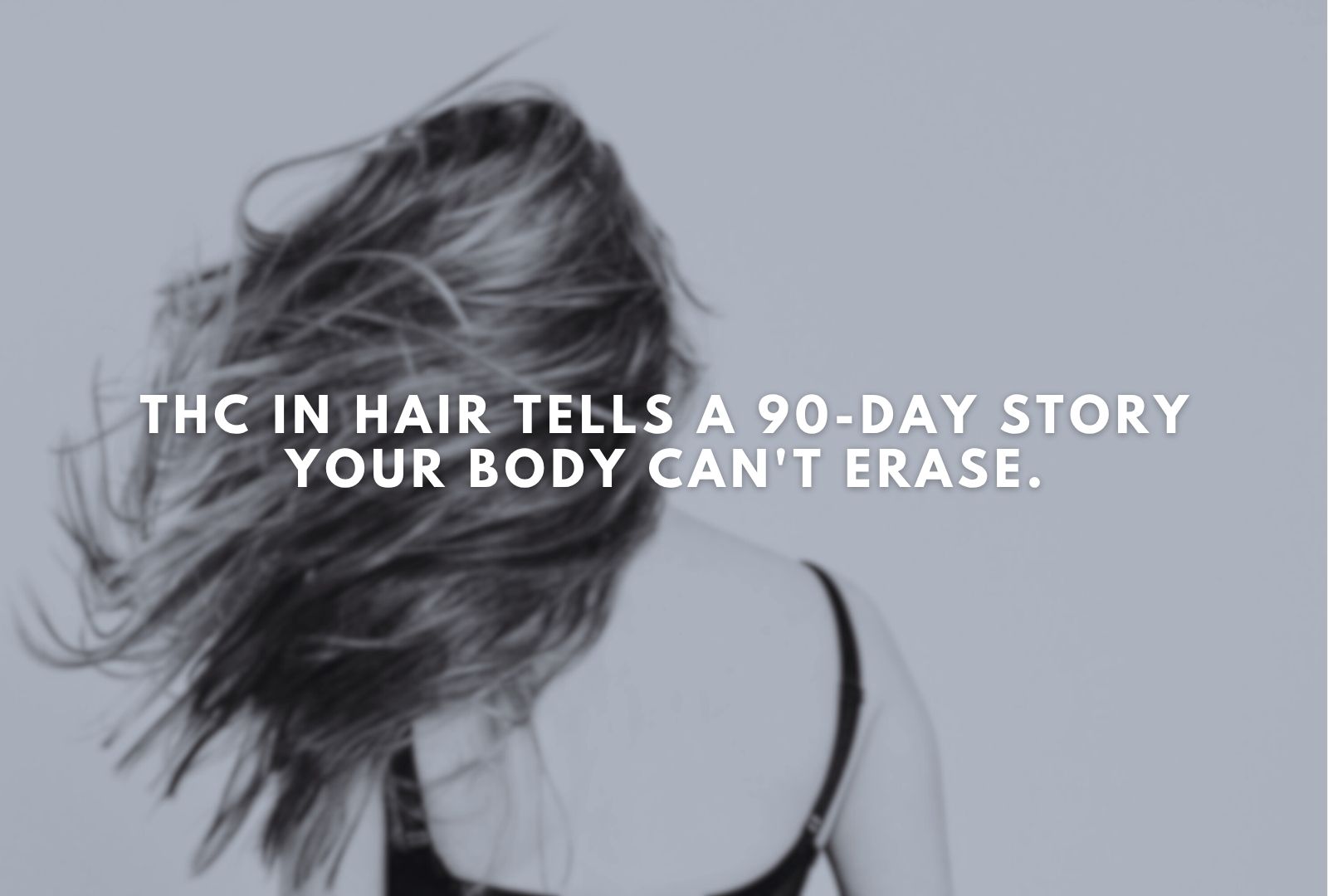THC, the primary psychoactive compound in marijuana, can stay in your hair for up to 90 days after use. Hair follicle drug testing is specifically designed to detect long-term patterns of cannabis consumption. Unlike urine or saliva tests that measure recent use, hair tests provide a historical record of marijuana exposure over a three-month period.

How Does THC Get Into Hair?
THC enters your hair through your bloodstream after consumption. When marijuana is smoked, vaped, or ingested, THC is metabolized in the liver into compounds such as THC-COOH. These metabolites circulate in the bloodstream and are deposited in the hair follicle. As the hair grows, these compounds become embedded in the strand and remain there until the hair is cut.
On average, hair grows about 0.5 inches per month. Because most labs test 1.5 inches of hair measured from the scalp, THC use is typically detectable for 90 days.
How Long Is THC Detectable in Hair?
THC is detectable in hair for approximately 90 days, depending on the length and location of the hair sampled. Most labs examine the 1.5 inches of hair nearest the scalp, which represents about three months of growth. However, if a longer hair segment is tested, THC use from earlier months may also be detected.
Body hair grows slower than scalp hair and may show THC presence for up to 12 months. This is important when individuals attempt to avoid testing by shaving their heads, as labs may request body hair samples instead.
Factors That Affect THC Retention in Hair

Several variables influence how long THC stays in your hair and the likelihood of a positive result:
- Frequency of use: Daily or frequent users accumulate more THC in hair than occasional users.
- Hair color: Darker hair contains more melanin, which binds more effectively to THC metabolites.
- Hair growth rate: Slower-growing hair can retain drug markers for longer durations.
- Type of hair: Body hair has a slower and more erratic growth cycle, resulting in an extended detection window.
- Metabolism: Although blood-clearing speed varies by individual, once THC is in the follicle, metabolism plays a minimal role in hair-based retention.
Is Hair Testing for THC Accurate?
Hair follicle drug testing is highly accurate when performed in certified laboratories. These labs follow a two-step process:
- Initial Screening: Enzyme-linked immunosorbent assay (ELISA) is used to detect the presence of THC-COOH.
- Confirmatory Testing: Positive results are confirmed with gas chromatography–mass spectrometry (GC-MS), which virtually eliminates the risk of false positives.
Labs also pre-wash hair samples to eliminate environmental contamination from things like secondhand smoke or topical cannabis products. Hair drug tests do not detect external exposure—they detect internal drug metabolites that are deposited through the bloodstream.
Can You Remove THC From Hair?
No method has been scientifically proven to reliably remove THC metabolites from hair once they are embedded in the hair shaft. Standard shampoos, hair dyes, and home remedies do not eliminate the internal markers.
Some products, like detox shampoos, claim to mask or remove drug traces, but:
- Labs wash samples before testing to strip away surface contamination.
- Most detox shampoos only affect the external surface of the hair.
- Bleaching or chemically damaging the hair may reduce THC levels slightly, but these changes are detectable and may result in test rejection or suspicion.
Shaving your head or removing all body hair does not avoid detection, as labs may request hair from other parts of the body.
Does One-Time Marijuana Use Show Up in a Hair Test?
Yes, even a single use of THC can show up in a hair follicle test. While chronic use leads to higher concentrations, studies have shown that occasional or one-time use can still be detected, especially in individuals with dark or slow-growing hair. There is no guaranteed “safe amount” of cannabis use that will avoid detection within the 90-day window.
Is Secondhand Smoke a Risk for Hair Tests?
Secondhand marijuana smoke is not enough to trigger a positive hair test. Laboratories test for THC-COOH, a metabolite only produced after active consumption. External contaminants are washed away during the sample preparation process. Passive exposure does not generate internal THC-COOH and therefore does not show up in a legitimate test.
Is Body Hair Used in Drug Testing?
When scalp hair is unavailable, labs often collect body hair to complete the test. Body hair grows more slowly than scalp hair, resulting in longer detection windows—typically 6 to 12 months. Common sources of body hair for testing include:
- Chest
- Arms
- Legs
- Underarms
This makes it difficult to evade testing by shaving your head.
How to Pass a Hair Drug Test for THC
The only guaranteed way to pass a hair drug test is to abstain from marijuana for at least 90 days. Some key facts:
- Hair grows at a steady rate of 0.5 inches per month.
- Labs usually test 1.5 inches of hair from the scalp.
- THC-COOH stays embedded in hair and cannot be washed out.
- Detox shampoos and bleaching techniques are not proven to be reliable.
Attempting to mask or manipulate a hair test can result in disqualification or additional legal consequences.
Final Answer: How Long Does THC Stay in Your Hair?
THC can stay in your hair for up to 90 days, depending on hair growth and testing procedures. The detection window may be even longer when body hair is used. Hair follicle testing provides a reliable and long-term record of

It is designed to detect consistent patterns of THC consumption, not just recent use. Abstaining from cannabis for at least three months is the only reliable way to pass a hair drug test.